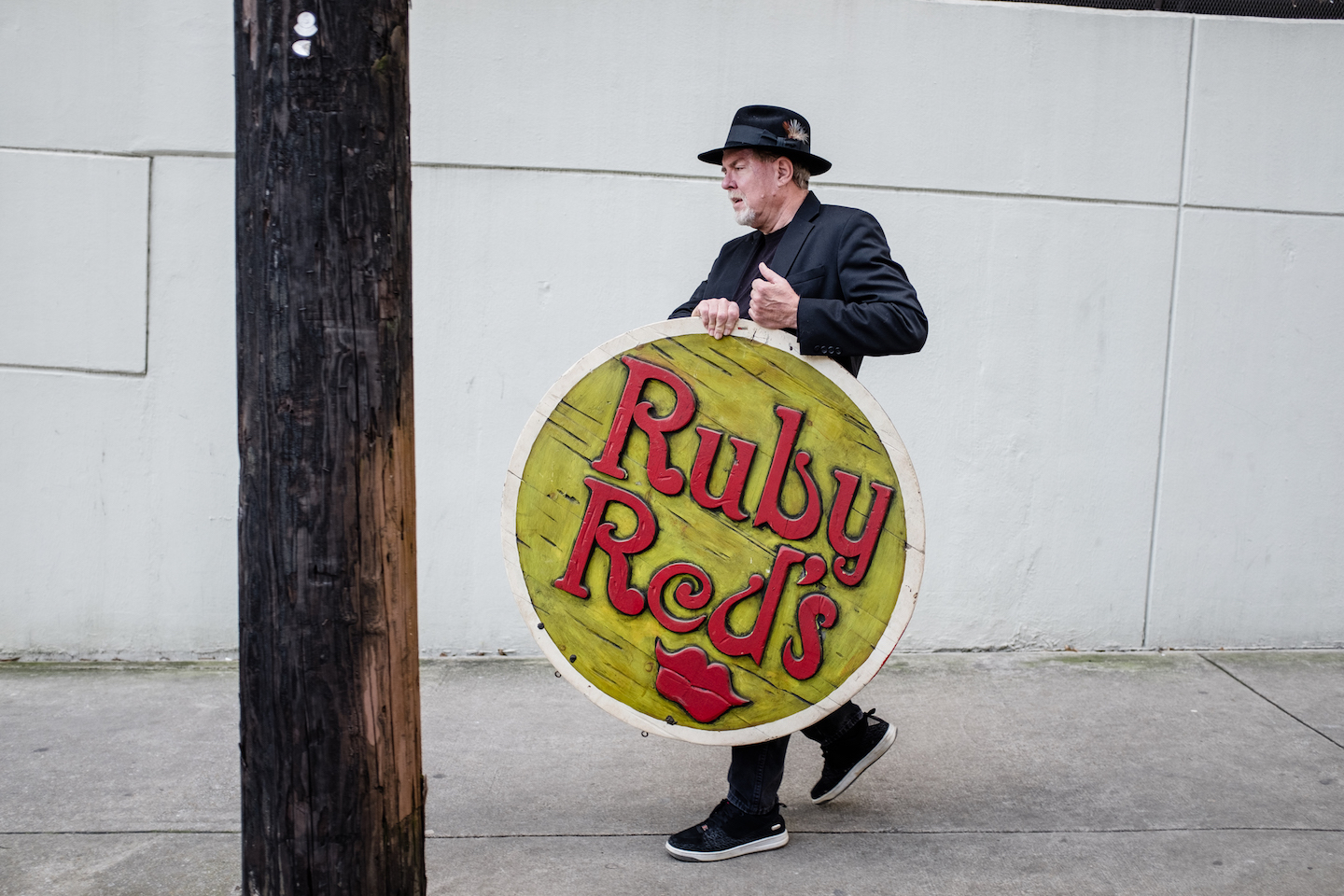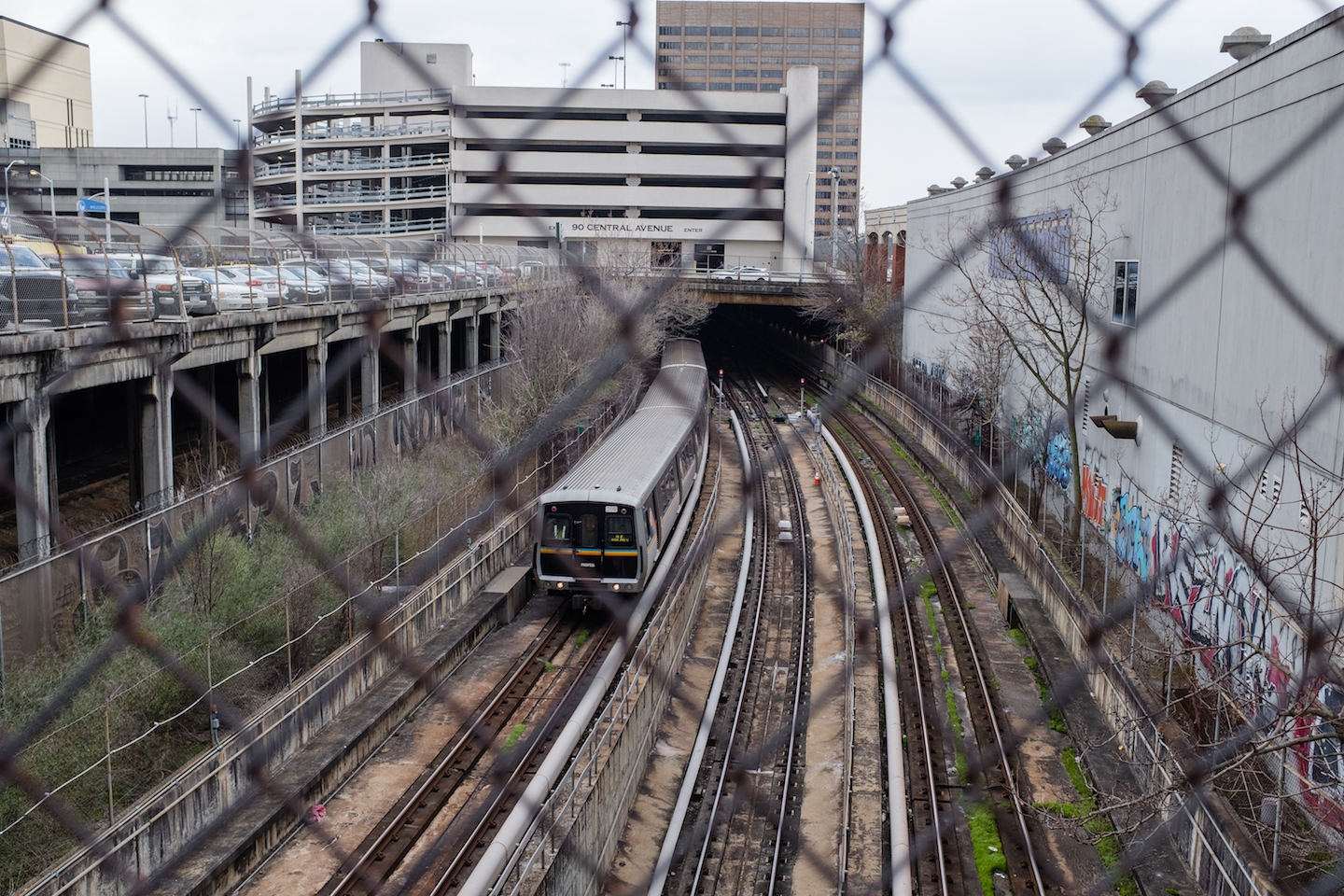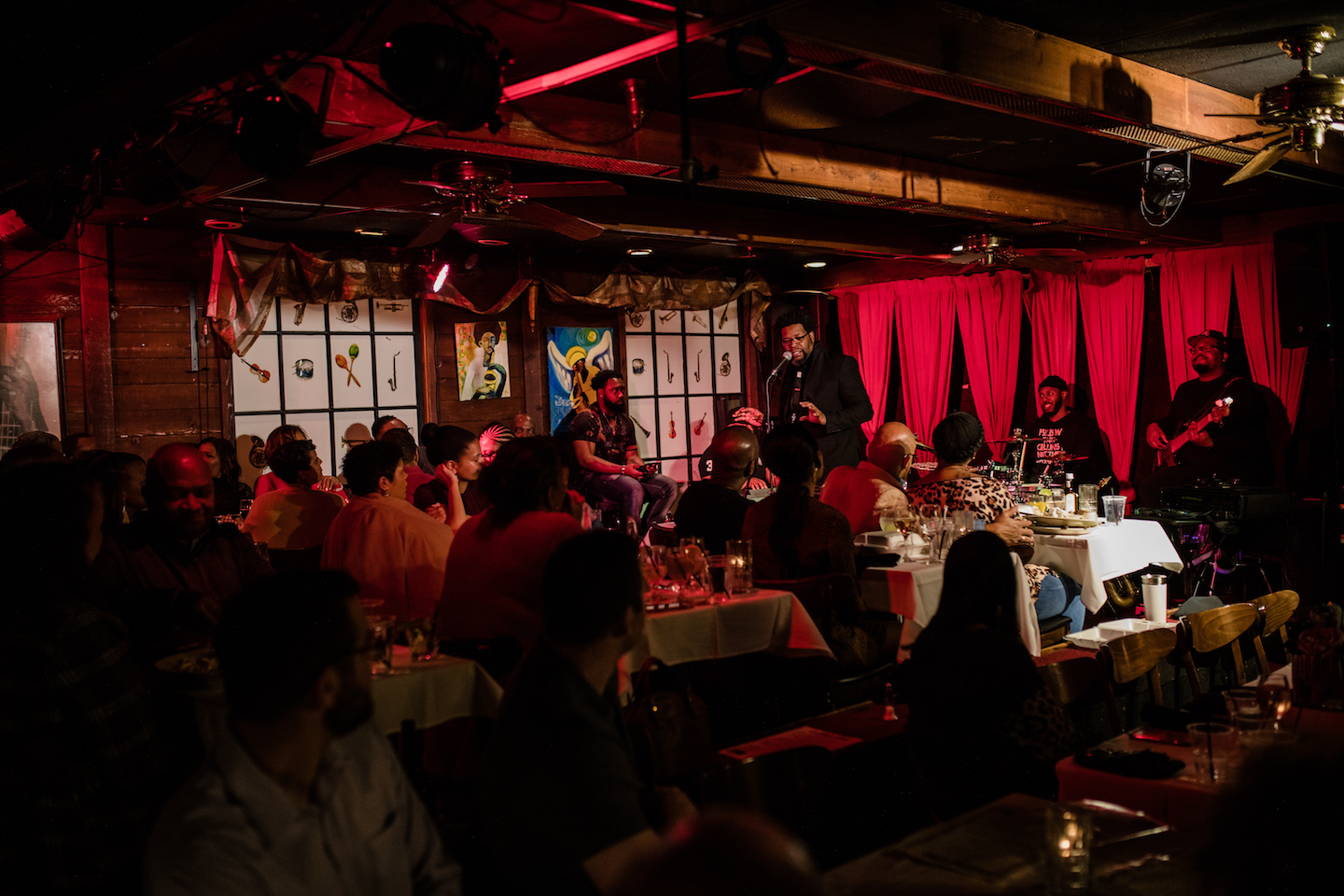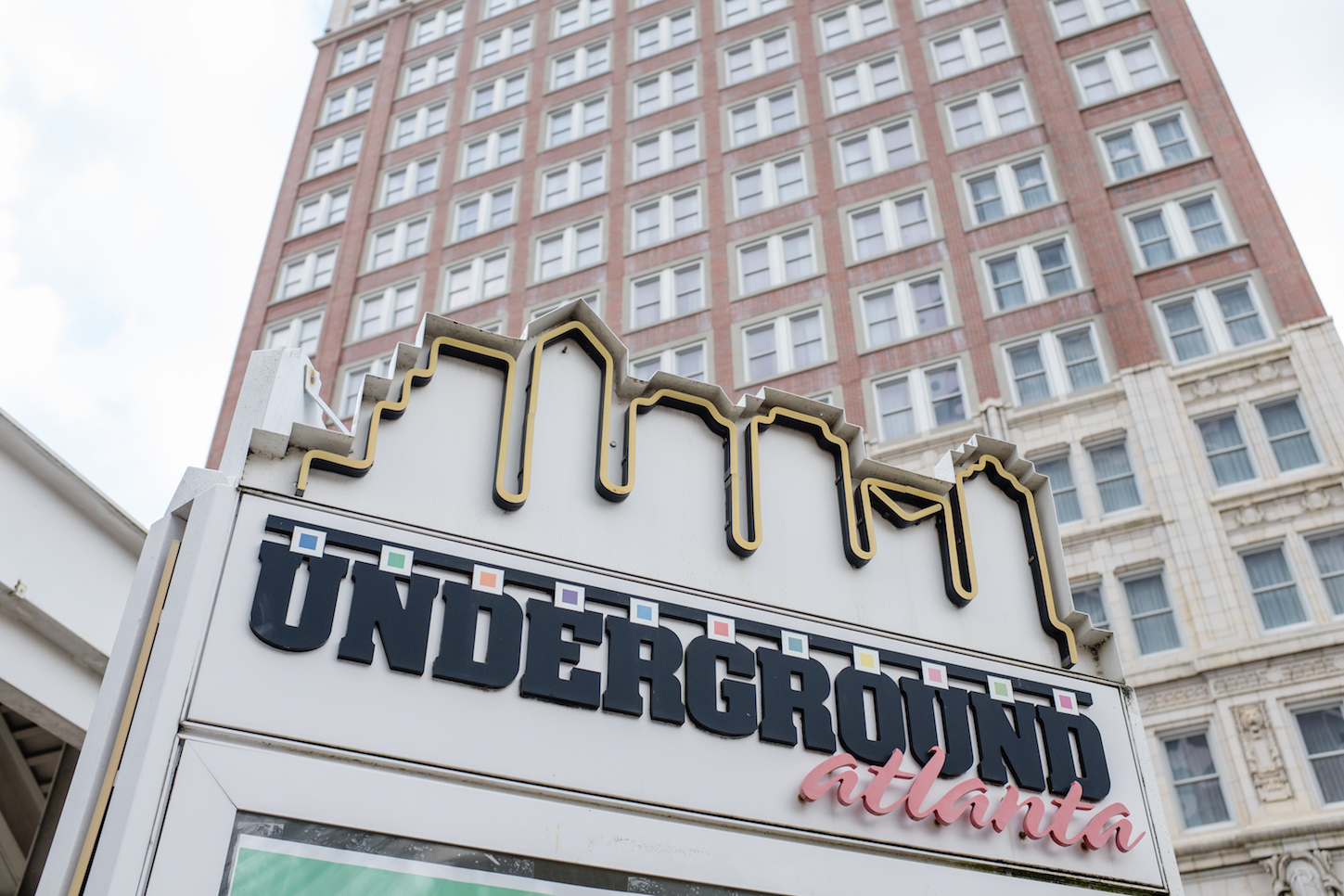This article is part of a special installment of Deep Dive created in partnership with Jameson Irish Whiskey, telling the stories of bars of yesterday that shaped the neighborhoods of today.
You’d be hard-pressed to find many Atlantans today who can reminisce about the bars of city’s roaring jazz heyday in the late 1960s and early 1970s. Sure, it was a full half-century ago, but for such an illustrious epoch in The Big Peach—a time when one could stop into a bar and hear from musical luminaries like Herbie Hancock and Erroll Garner—it’s a history that’s been sadly forgotten. “Music empires have come and gone in Atlanta,” said Chad Radford, former music editor at Atlanta-based alt-weekly Creative Loafing. “They may have ruled the world while they were here, but now there’s no sign of their time here.”

The year Ruby Red’s opened was, incidentally, the year the Braves and Falcons arrived in Atlanta, perhaps marking the notable period of sustained, rapid growth for the city that has continued to this day. Until recently, the city had continuously ranked among America’s fastest-growing metro areas.
“We went from a city of 3 million to a city of almost 8 million in a 20-year period,” Ball said. “Most of the people in Atlanta now are not from Atlanta. They don’t have any idea what the city was like back then.” Indeed, Atlanta’s breakneck rate of migration might be blamed for the erosion of local music history from generation to generation. But once upon a time, it was that very explosive growth, along with the gradual loosening of notoriously stringent liquor laws, that would help attract the sound of the jazz, and its disciples, from larger cities to the underbelly of Atlanta.

For those who remember, however, there’s a rich history to be told, said Rocky Ball, banjo player for the Ruby Red’s Band, Georgia’s longest continuously operating jazz group. Initially founded by Portland-born Dixieland jazz tuba player Hal Johnson, the band’s first iteration was made up of transplants who’d found success in the more established jazz scenes of New York, Chicago, and San Francisco. Seeing an opportunity, those founding members pooled cash together to help open the original location of the band’s popular eponymous bar, the Ruby Red’s Warehouse, where they’d perform to packed audiences from 1966 to the mid 1970’s.
“When Ruby Red’s opened, almost every county around Fulton County, which includes Atlanta, was dry,” Ball explained. “Everyone coming to Atlanta was eager for the entertainment and drinks. There were banjos, sing-alongs, music, dancing, pitchers of beer, and peanuts whose shells you could throw on the floor. It became popular overnight, with lines around the block. There were corporate heads from IBM, Coca-Cola, and George-Pacific; there were government people. Everyone was there."
To contextualize the rise of jazz bars here, it’s worth taking several steps back to Atlanta’s origin story: a depot for the booming Western and Atlantic Railroad. In the early decades of the 19th century, crowded train routes forced city planners to physically redirect the flow of automobile traffic by erecting iron bridges for cars. This, in turn, raised an entire section of the city up one floor, pushing once street-level businesses to the second floor of their buildings. As Prohibition swept the country, this now-obscured, subterranean level of the city became prime real estate for booze-slinging speakeasies—foreshadowing the eventual incorporation and opening of the official Underground Atlanta nightlife hub 40 years later, when investors had the idea to create an entertainment district beneath the city. “It became a national draw almost overnight,” said Ball.
Jazz was present in Atlanta, namely with African-American communities, in the years leading up to the Civil Rights movement, and so many of the bars and venues located at the Underground supported acts of the genre. Records are fuzzy, but perhaps one the earliest and longest-running jazz clubs in Atlanta was Dee’s Birdcage, a 24-hour underground bar that was a stop on the Chitlin’ Circuit—that collection of bars in segregated cities that provided work for touring black musicians throughout the first half of the 20th century. During its run from the early ‘50s up until the 1980s, Dee’s Birdcage would see performances from the likes of Isaac Hayes and Curtis Mayfield.

Then there was Paschal’s La Carousel, which, when it opened in 1960, was the only nightclub that opened its doors to blacks, whites, and homosexuals. Owners and brothers James and Robert Paschal created a cultural haven for the black community described in a 1996 New York Times tribute piece as the place that “fed the Civil Rights struggle.”
Over the years, the restaurant, hotel, and nightclub complex would play host to luminaries from jazz, blues, and beyond, from Aretha Franklin to Gladys Knight, as well as Martin Luther King Jr. himself. “Paschal’s La Carousel was a world-famous oasis for black musicians and traveling black shows from all over the country,” Ball said. “It was legendary for the black community.”
While black jazz and white jazz existed in separate camps in the earlier half of the century, things were beginning to mix, however clumsily, by the late ‘60s. By the end of the decade, Atlanta had formally de-segregated with the passage of the Civil Rights Act of 1964 and the Voting Right Acts of 1965. While whites comprised 61.7% of the population in 1960, by 1970, African-Americans had taken the majority, propelling to power the city’s first black mayor, Maynard Jackson.
“I would say we influenced each other,” Ball noted of the relationship between white and black artists. “It felt like most of that kind of racial tension existed way outside of urban areas. And musicians, especially, always seemed to get along. And we knew that the spread of New Orleans jazz all over the world was influenced by the guys who first played it in New Orleans, and they were all black.”

The growing popularity of jazz and the increasing urbanization of Atlanta came to a head towards the end of the decade with the 1969 launch of the Underground entertainment district. Following a $10 million development, the neighborhood would serve as the city’s nexus of nightlife for just five years until its quick decline. Notwithstanding, it was an illustrious half-decade for Atlanta’s bar scene, with several storied institutions drawing visitors from far and wide.
“Everything was represented in the Underground,” Ball said, citing the fabulously outlandish decor of Atlanta institution Dante’s Down the Hatch, which included a full-sized Spanish galleon, complete with water and alligators. “You could dine on the dock or have fondue aboard the schooner.”
Underscoring the close relationship between musicians and the proprietors who hire them to entertain their guests, it wasn’t uncommon for venues to become defined largely by their regular musical act, be that of jazz or blues. These included Scarlet O’Hara, Blarney Stone, and even a re-located Ruby Red’s Warehouse. “There was another place called Muhlenbrink’s Saloon where everyone would go to see an old famous piano player named ‘Piano Red,’” said Ball.
By 1976, Underground Atlanta was in steep decline, with the construction of Atlanta’s public transit system displacing a vast swath of the district and rising rates of crime rubbing off the charm of its historic environs. It formally closed in 1980, laying in a state of disrepair until 1989, when it reopened, with controversy, as a sanitized walking district lined with retail outlets. By the next decade, nearly all of Atlanta’s ‘60s-era jazz bars and clubs, including Paschal’s La Carousel, had shuttered.
The story of jazz bars in Atlanta is one of music and beer, but also of race, migration, and urban development. It’s a testament to America’s period of tremendous social and economic upheaval that continues to define the city today. Sure, the Underground may now be bleached clean and Atlanta may be best known as a hip-hop empire. But for a seemingly brief flash of the pan, there were jazz—with its fiery strumming and its bold syncopation—the epochal anthem of Atlanta’s ascent to greatness.
from VICE https://ift.tt/2W9BC3N
via cheap web hosting
No comments:
Post a Comment